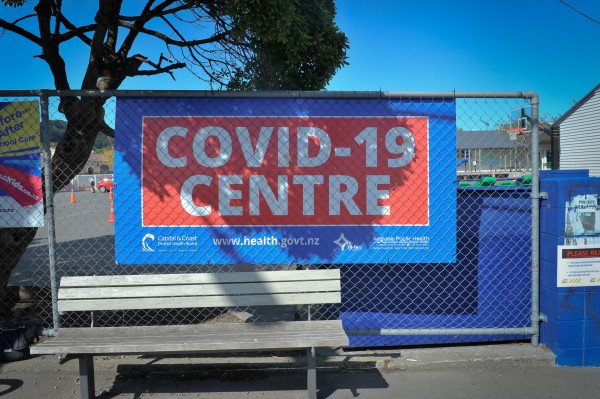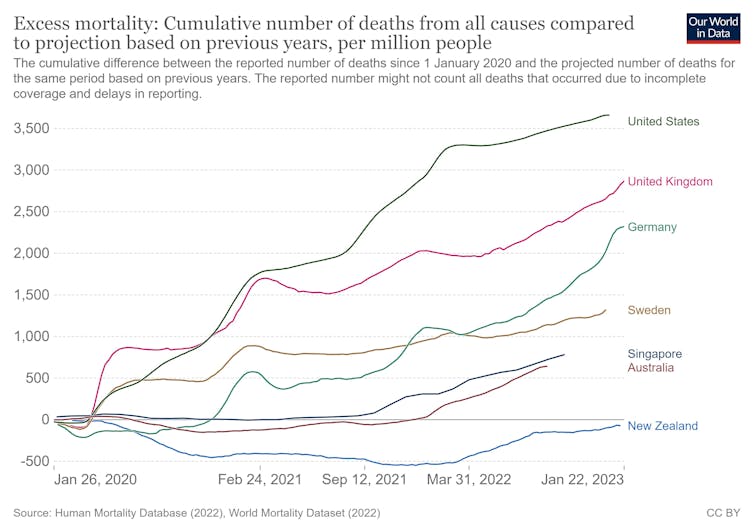References
- Adams D. When will COVID stop being a global emergency. Nature 2023;614(7947):201-02.
- El-Sadr WM, Vasan A, El-Mohandes A. Facing the New Covid-19 Reality. New England Journal of Medicine 2023;388(5):385-87. doi: 10.1056/nejmp2213920
- Baker MG, Wilson N, Blakely T. Elimination could be the optimal response strategy for covid-19 and other emerging pandemic diseases. BMJ 2020:m4907. doi: 10.1136/bmj.m4907
- Stein C, Nassereldine H, Sorensen RJD, et al. Past SARS-CoV-2 infection protection against re-infection: a systematic review and meta-analysis. The Lancet 2023 doi: 10.1016/s0140-6736(22)02465-5
- Davis HE, Mccorkell L, Vogel JM, et al. Long COVID: major findings, mechanisms and recommendations. Nature Reviews Microbiology 2023 doi: 10.1038/s41579-022-00846-2
- Torres-Castro R, Vasconcello-Castillo L, Alsina-Restoy X, et al. Respiratory function in patients post-infection by COVID-19: a systematic review and meta-analysis. Pulmonology 2021;27(4):328-37. doi: 10.1016/j.pulmoe.2020.10.013 [published Online First: 20201125]
- Xu S-W, Ilyas I, Weng J-P. Endothelial dysfunction in COVID-19: an overview of evidence, biomarkers, mechanisms and potential therapies. Acta Pharmacologica Sinica 2022 doi: 10.1038/s41401-022-00998-0
- Sidik SM. Heart disease after COVID: what the data say. Nature 2022;608(7921):26-28. doi: 10.1038/d41586-022-02074-3
- Tokars JI, Olsen SJ, Reed C. Seasonal Incidence of Symptomatic Influenza in the United States. Clinical Infectious Diseases 2017;66(10):1511-18. doi: 10.1093/cid/cix1060
- Bowe B, Xie Y, Al-Aly Z. Acute and postacute sequelae associated with SARS-CoV-2 reinfection. Nature Medicine 2022;28(11):2398-405. doi: 10.1038/s41591-022-02051-3
- Sachs JD, Karim SSA, Aknin L, et al. The Lancet Commission on lessons for the future from the COVID-19 pandemic. The Lancet 2022;400(10359):1224-80. doi: 10.1016/s0140-6736(22)01585-9
- Lazarus JV, Romero D, Kopka CJ, et al. A multinational Delphi consensus to end the COVID-19 public health threat. Nature 2022;611(7935):332-45. doi: 10.1038/s41586-022-05398-2
- Kvalsvig A, Barnard LT, Summers J, et al. Integrated Prevention and Control of Seasonal Respiratory Infections in Aotearoa New Zealand: next steps for transformative change. Policy Quarterly 2022;18(1):44-51. doi: 10.26686/pq.v18i1.7500
- Khieu TQT, Pierse N, Telfar-Barnard LF, et al. Modelled seasonal influenza mortality shows marked differences in risk by age, sex, ethnicity and socioeconomic position in New Zealand. Journal of Infection 2017;75(3):225-33.
- Huang QS, Wood T, Jelley L, et al. Impact of the COVID-19 nonpharmaceutical interventions on influenza and other respiratory viral infections in New Zealand. Nature Communications 2021;12(1) doi: 10.1038/s41467-021-21157-9
- Szanyi J, Wilson T, Howe S, et al. Epidemiologic and economic modelling of optimal COVID-19 policy: public health and social measures, masks and vaccines in Victoria, Australia. The Lancet Regional Health - Western Pacific 2023;32:e100675.
- Kvalsvig A, Wilson N, Chan L, et al. Mass masking: an alternative to a second lockdown in Aotearoa. New Zealand Medical Journal 2020;133(1517):8-13.
- Stevenson A, Freeman J, Jermy M, et al. Airborne transmission: a new paradigm with major implications for infection control and public health. New Zealand Medical Journal 2023;136(1570):69-77.
- Carvalho N, Sousa TV, Mizdrak A, et al. Comparing health gains, costs and cost-effectiveness of 100s of interventions in Australia and New Zealand: an online interactive league table. Population Health Metrics 2022;20(1) doi: 10.1186/s12963-022-00294-3
- Boyd M, Baker MG, Wilson N. Border closure for island nations? Analysis of pandemic and bioweapon‐related threats suggests some scenarios warrant drastic action. Australian and New Zealand Journal of Public Health 2020;44(2):89-91. doi: 10.1111/1753-6405.12991
- Abbasi J. Bird Flu Has Begun to Spread in Mammals—Here’s What’s Important to Know. JAMA 2023 doi: 10.1001/jama.2023.1317
- Baker MG, Durrheim D, Hsu LY, et al. COVID-19 and other pandemics require a coherent response strategy. The Lancet 2023;401(10373):265-66. doi: 10.1016/s0140-6736(22)02489-8
About the Briefing
Public health expert commentary and analysis on the challenges facing Aotearoa New Zealand and evidence-based solutions.
Subscribe

Public Health Expert Briefing
Get the latest insights from the public health research community delivered straight to your inbox for free. Subscribe to stay up to date with the latest research, analysis and commentary from the Public Health Expert Briefing.

